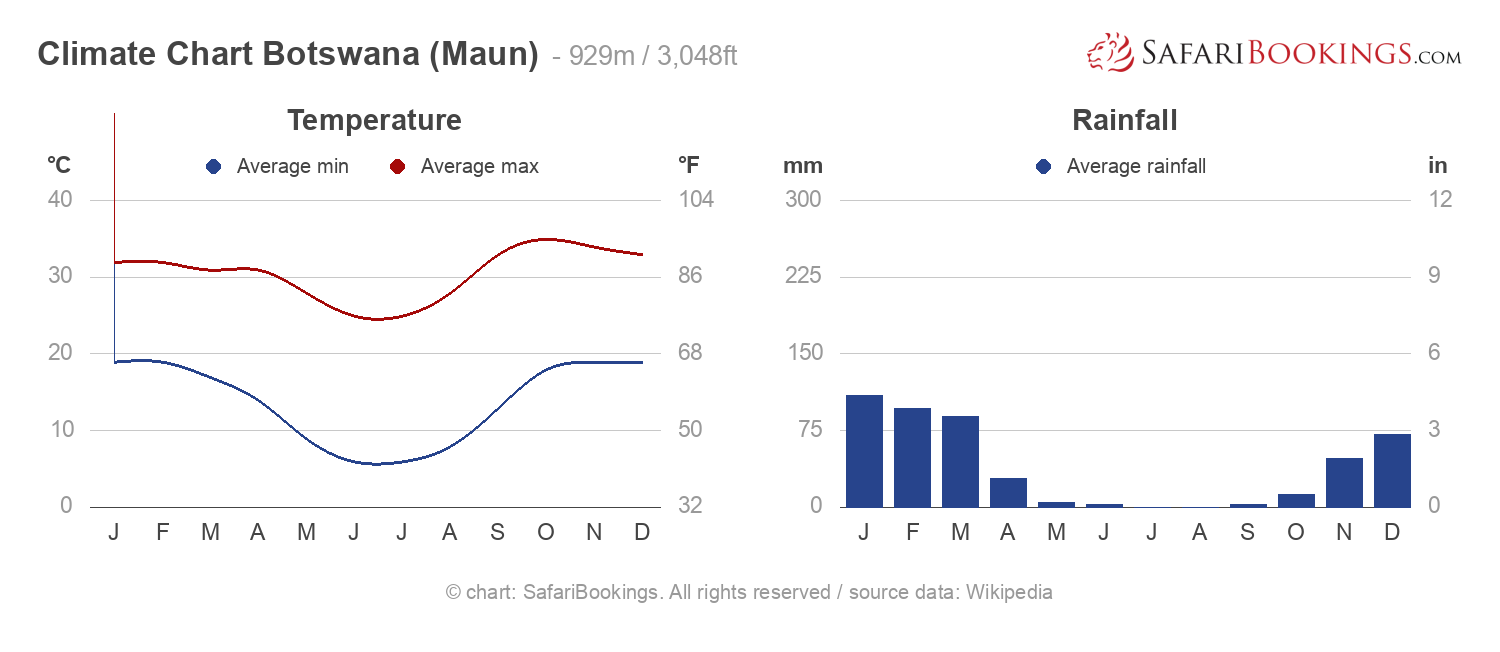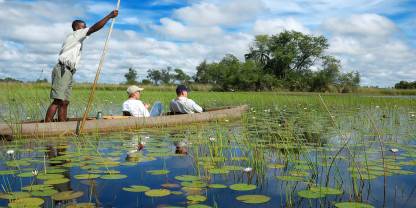
Climate Chart Maun – 929m / 3,048ft
Botswana has a subtropical desert climate characterized by great differences in daytime and nighttime temperatures, and generally low humidity overall. It receives virtually no rainfall for six months of the year, with the wettest months being December to March. Winter and summer occur at opposite times of the year to Europe, North America and Asia, and they correspond to the Dry and Wet season respectively.
Maun's Climate Compared to Botswana's Parks
The climate of Botswana’s northern parks is similar to that in the town of Maun, but in the Okavango Delta temperatures are usually slightly lower due to the abundance of water. Parks located in the drier Kalahari environment will be more extreme: hotter during the day and colder or close to freezing at night. The south and west of the country experiences less rainfall.
The climate of Botswana’s northern parks is similar to that in the town of Maun, but in the Okavango Delta temperatures are usually slightly lower due to the abundance of water. Parks located in the drier Kalahari environment will be more extreme: hotter during the day and colder or close to freezing at night. The south and west of the country experiences less rainfall.
Dry Season April to October
 View Photos
View Photos
There is little to no rain during the Dry season and humidity is low (usually 20% to 40%). Animals gather around waterholes and rivers when other water sources dry up.
- April & May – April usually has lovely, clear weather and few clouds, although occasional thunderstorms are possible. The temperatures are relatively cool, typically 9°C/48°F in the morning in May and 28°C/82°F in the afternoon.
- June, July & August – Be sure to pack warm clothing because early morning will be cold. The average morning temperature is 7°C/44°F. Nights can drop below freezing, especially in the drier Kalahari areas. Afternoons will be more pleasant, with temperatures around 26°C/79°F.
- September & October – The heat gradually builds, and it can get very hot in October (reaching peaks of 38°C/100°F), but the average temperature remains around 34°C/93°F in the afternoon.
Dry Season Photos
Wet Season November to March
 View Photos
View Photos
- November & December – Clouds start to appear, bringing cooler temperatures and an occasional late afternoon shower. This pattern of change continues in December, with typical temperatures between 19°C/66°F in the morning and 33°C/91°F in the afternoon.
- January & February – These are the wettest months, characterized by torrential downpours in the afternoon and sometimes continuous rainfall for days. Afternoons average 32°C/90°F, and the humidity is between 50% and 80%. Daytime temperatures soar in the Kalahari.
- March – Rainfall decreases and it steadily cools. The nights tend to be cooler, but the days are very temperate at around 31°C/88°F.





